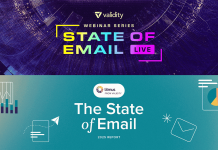Create your very own Auto Publish News/Blog Site and Earn Passive Income in Just 4 Easy Steps
Marketing strategies face some headwinds in 2024. They must adapt to embrace new technologies while operating with tighter budgets and a greater focus on accessibility and privacy.
Let’s take a closer look at how companies can overcome these very real – but not insurmountable – challenges this year.
Marketing budgets
In January 2023, many experts expressed dire warnings about the economy. It was clearly heading for a recession. A year later, the USA remains free of recession despite multiple interest rate increases. A report from the National Association for Business Economics found that 76% of respondents believe the risk of a recession this year has fallen to 50% or less, and some companies, such as Bank of America, are predicting a soft landing.
However, when planning their 2024 budgets, most marketing teams assumed they would do more with less this year. These tight budgets will force companies to streamline fragmented collections of niche marketing technologies. Companies that choose to implement all-in-one platforms that simplify workflows and consolidate functions will gain an advantage. Integrated technology stacks based on centralized workflows are becoming the gold standard for companies seeking efficiency and cost savings.
Data privacy
Despite the rise of social media and other digital platforms, email marketing remains one of the most popular and effective marketing channels, and it's no wonder – over 4 billion people use email every day. According to a recent Hubspot report:
- 77% of marketers saw an increase in email engagement in the past year.
- Email ROI generates $36 for every $1 spent.
- The average email open rate is 46% to 50%.
- Click rates average 2.6% to 3%.
- The average email delivery rate in 2023 was over 85%, with Google (95%), Microsoft (91%) and Yahoo (81%) topping the list.
To protect recipients, these three email providers are implementing stricter anti-spam policies. If you don't comply, you risk having your emails redirected to spam folders or blocked entirely. To avoid penalties and performance degradation, marketers should prioritize sending relevant, personalized messages to engaged subscribers and use innovative tactics like live polls to capture subscriber preferences at scale.
In 2024, expect marketers to deploy robust re-engagement campaigns to invite and encourage dormant subscribers to engage with messages. This approach helps marketing teams identify and remove inactive subscribers from their lists. The focus will (and should) shift from email volume to list quality and audience engagement. Building a quality subscriber list is key to deliverability.
Cross-generational email preferences and personalization
While email is a proven marketing channel for reaching many audiences, it is time to evolve the approach if marketers want to meet the changing expectations of subscribers across generations. Older generations may value the familiarity and universality of email. Younger generations (think Millennials and Gen Z) recognize the value for business purposes and expect a more personal, conversational tone, similar to what social media channels offer. In fact, 80% of customers are more likely to buy from a brand that offers personalized experiences. But your personalization needs to be effective.
This major – but not insurmountable – challenge requires marketers to create an omnichannel experience, maintain the reach of email, and adapt its use to make content more understandable and engaging. Marketers who shift from purely promotional emails to messages with a more personal, human tone that provide a personalized experience tailored to new preferences will have more success and build a connection with recipients.
Accessibility
Customer experience will be top of mind in 2024, but equally important to prioritizing CX is prioritizing accessibility. It can't be an afterthought. To deliver an exceptional customer experience, accessibility must be incorporated into the marketing strategy from the start. Brands that embrace accessibility as a core value – and not just a compliance issue – position themselves to engage with a broader audience and win their trust and business.
Brands that integrate accessibility into their CX strategy benefit from greater customer satisfaction, greater reach and increased loyalty. Brands should:
- Conduct accessibility checks for your email marketing programs. Follow email accessibility best practices and have a plan to update areas that still need improvement, such as: B. Dark mode compatibility, copy size, format and orientation, and code compatible with assistive technologies? Identify any obstacles in the customer journey and define steps to resolve them.
- Adopt universal design principles that benefit all audiences, including alt text for images, captions for audio/video, simple language, and good color contrast.
- Offer your customers a range of ways to interact, including chat, phone, email and in person, to meet different needs and preferences.
- Promote accessibility in marketing materials and communications to highlight your company's commitment.
- Gather feedback from disability activists and groups to make improvements.
AI for email marketers
AI played a much more important role in 2023: 90% of marketers said it helped save time on manual tasks and gave them more time for creative aspects of their role (79%) and the elements of their work put Enjoy the best (80%). Was it all sunshine and roses last year? Not quite.
What was most popular? The time savings on repetitive tasks. While marketers remained excited about AI's potential, they also expressed:
- Worry about its ability to generate high-quality, strategic marketing content versus “passable” content.
- Fear that AI would replace human jobs rather than supporting and improving the work humans do.
- Fear due to the initial challenges of implementing and integrating the technology into workflows.
- Frustration with choosing the right AI provider and getting the right training and support.
- They are reluctant to allocate a large portion of their budget to AI startup costs.
As we enter 2024, marketers remain cautiously optimistic about AI's promise to transform workflows and project management this year. Using AI for tedious tasks frees marketing teams to focus their energy on strategic, creative thinking.
But when AI is embedded into your email marketing platform, you can also use it to accelerate and improve the quality of your personalization. AI will help marketers curate smarter, more personalized, and more relevant emails through AI-powered product recommendations.
However, the value of AI lies in the ability of humans to use these tools effectively. The Email Marketing Show podcast said: “AI tools can only write about features and benefits. You feed information to these platforms and the result is linear. The problem is that people don’t just buy based on features and benefits, but also based on emotions.”
You will never remove the human element from AI marketing because humans are the storytellers that convey empathy and emotions that AI-powered tools lack. But do AI and email marketers work together to deliver a better experience for subscribers? That's a winning combination.
Final findings
The 2024 email marketing landscape requires adaptive, analytics-driven, and customer-centric strategies. The future performance of email campaigns will depend on how comprehensively marketers adopt an agile and personalized approach driven by data insights. Companies that resist static, blanket messaging in favor of targeted content that is precisely tailored to customers' needs and preferences and provides privacy will dominate inboxes. Marketers who will be successful in tomorrow's email will be the ones today who make dynamic, personalized and contextual emails a core part of their strategy.
Create your very own Auto Publish News/Blog Site and Earn Passive Income in Just 4 Easy Steps







